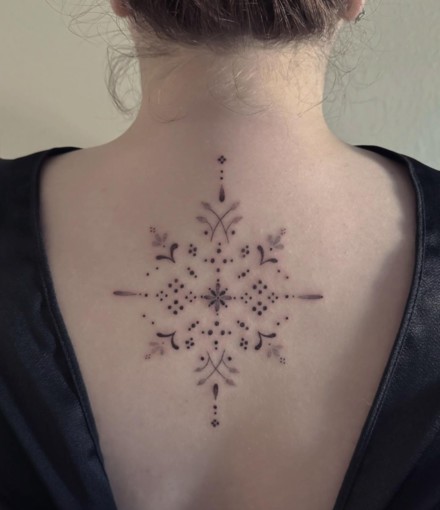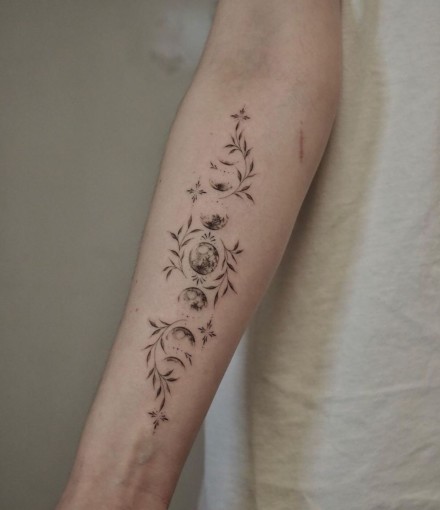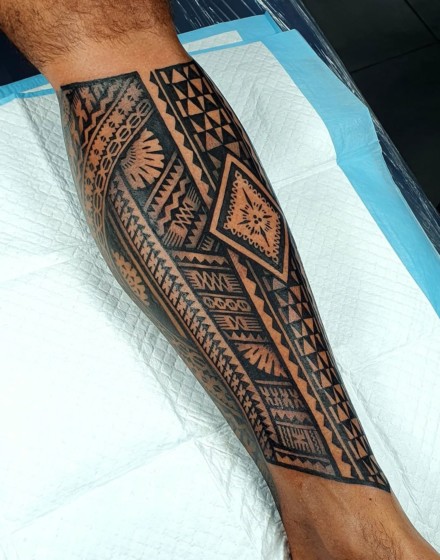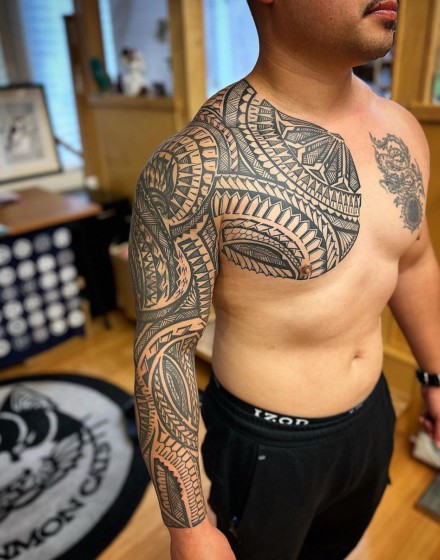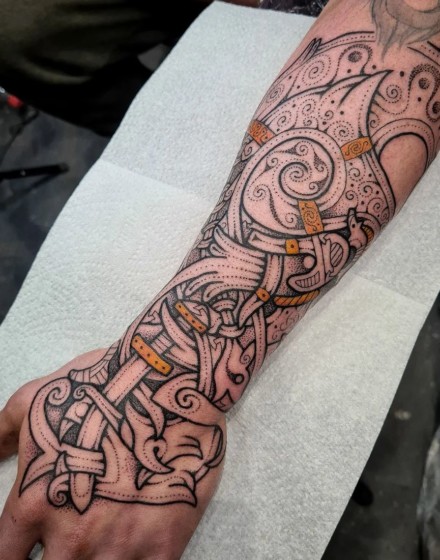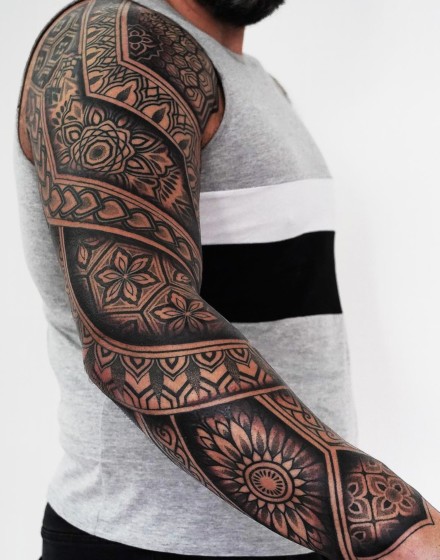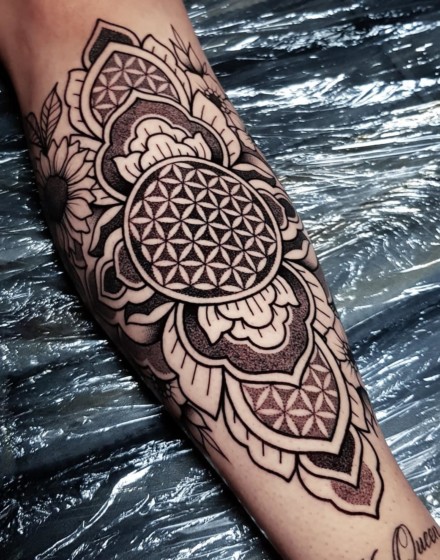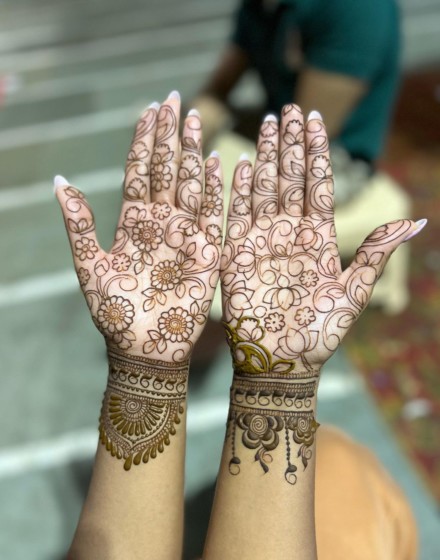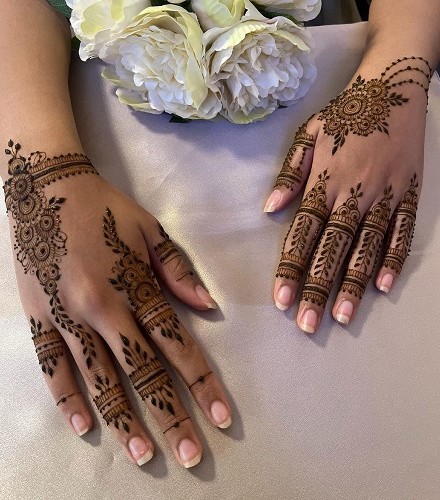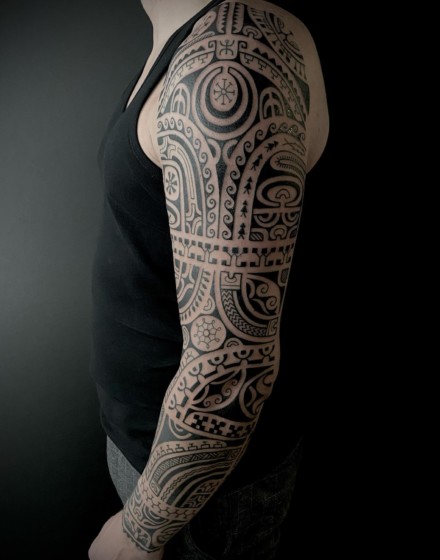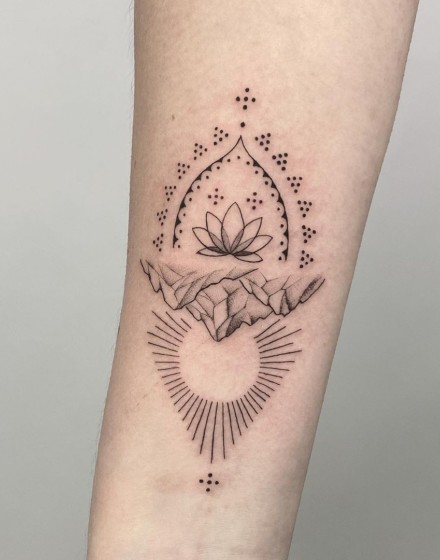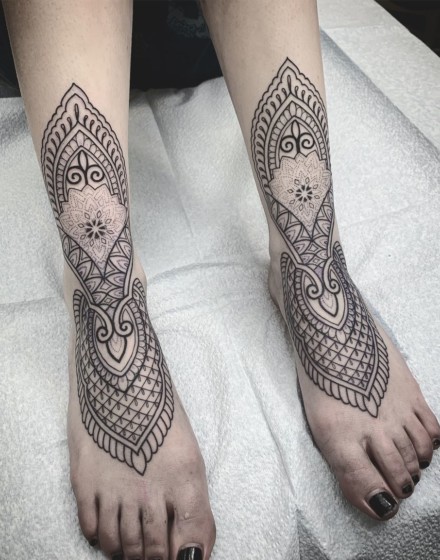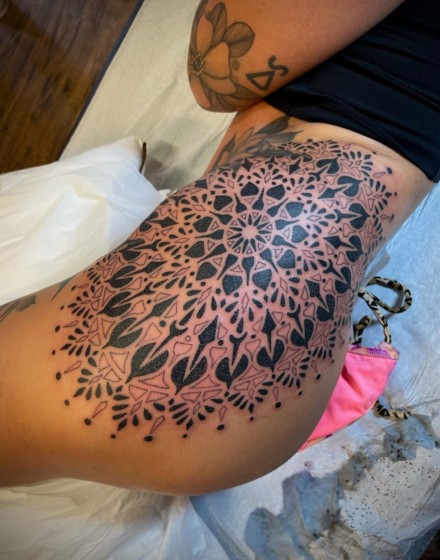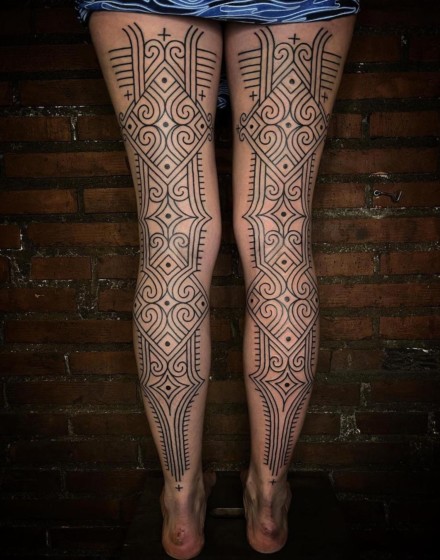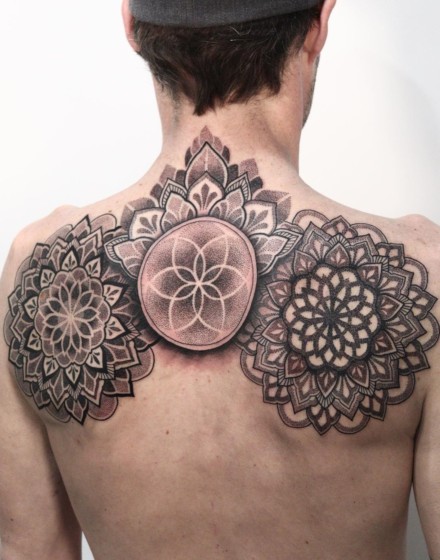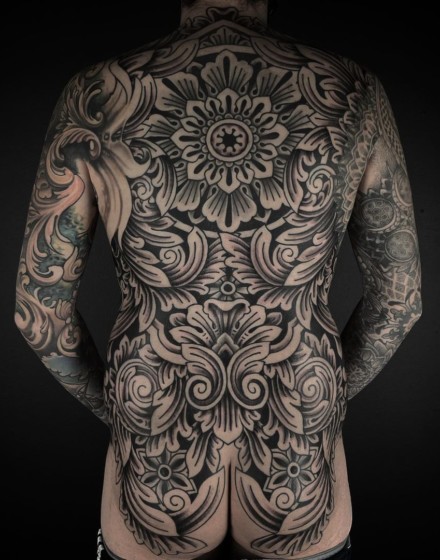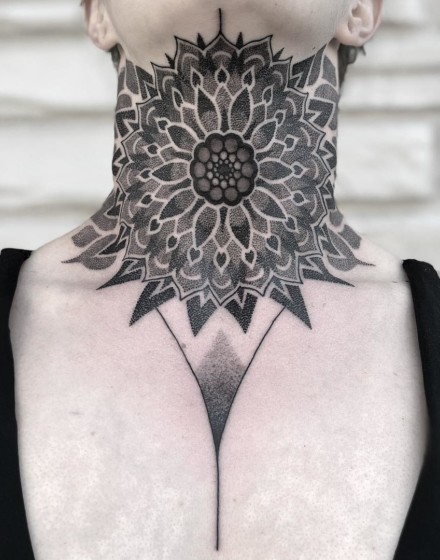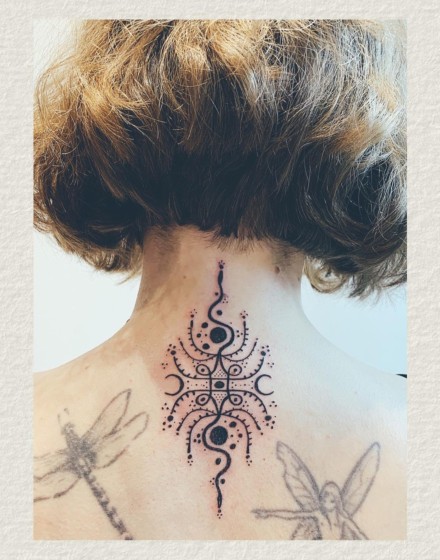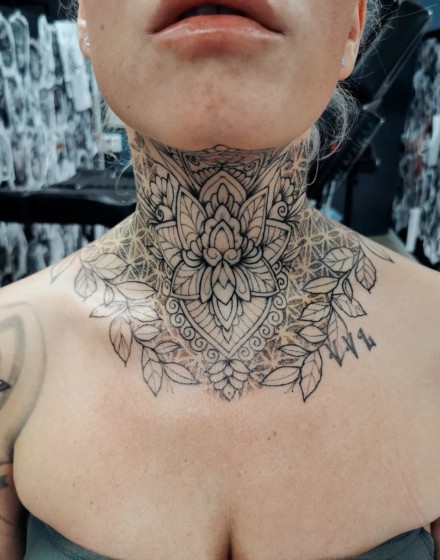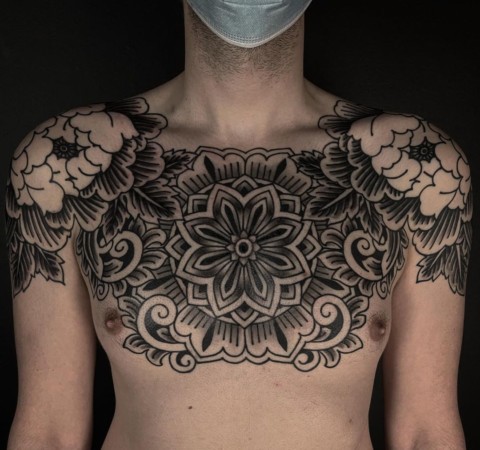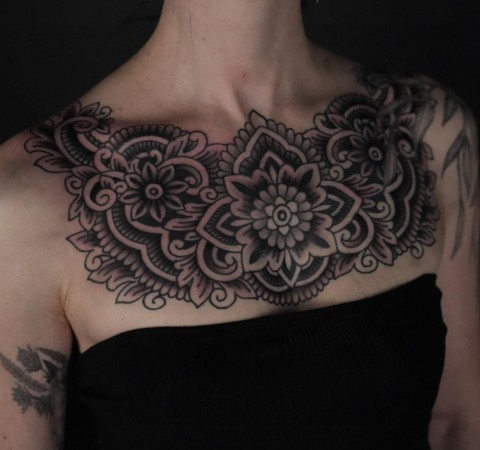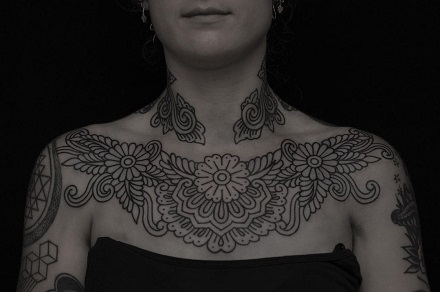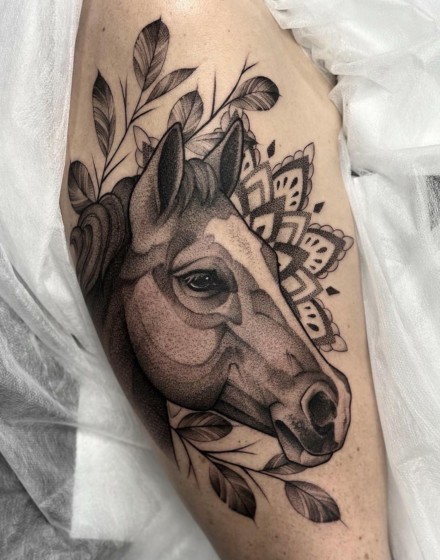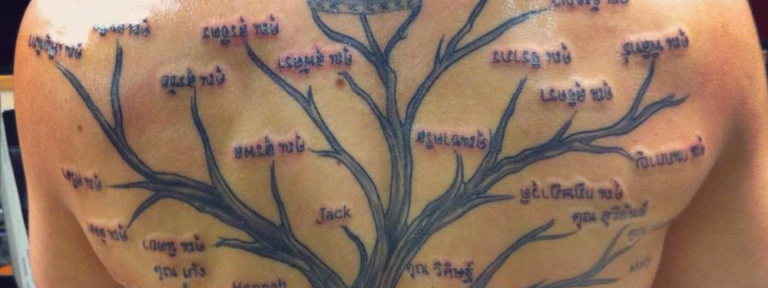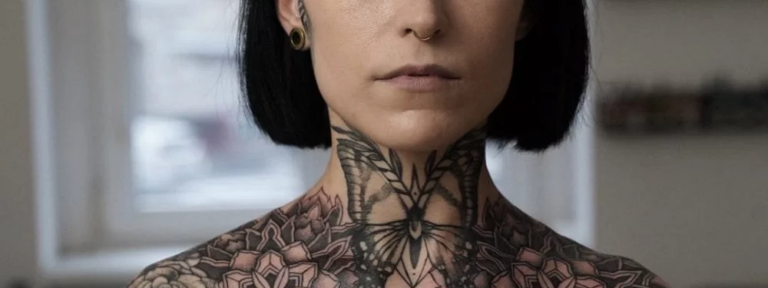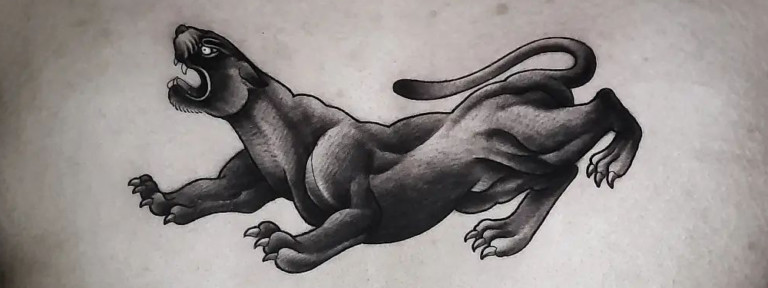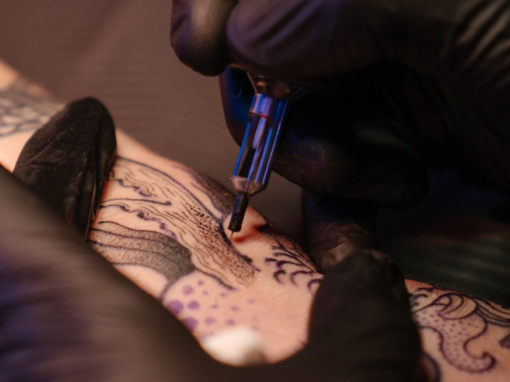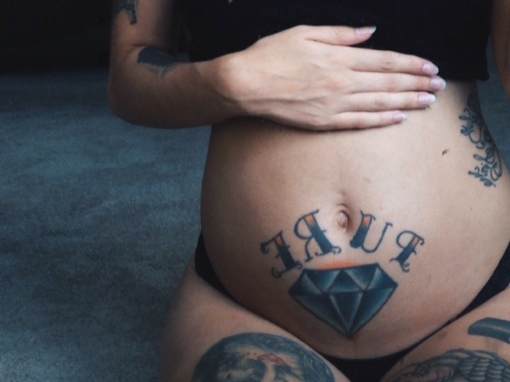If you want your future tattoo to be elegant, intricate, meaningful, and timeless—the ornamental tattoo style is definitely an option to explore. The ornamental tattoos have been around for centuries, and although the message they send today is different, they remain popular among tattoo enthusiasts.
In this article, we will take a look into the history and significance of this style, present a diverse collection of ornamental tattoo designs, and show you how you can combine their elements with other tattoo styles like realism or geometrical (this part is especially cool). Many inspirational design ideas are coming, so stay tuned!
Ornamental Tattoo: History, Elements, and Meanings
🏛️ Ancient roots
Ornamental tattoos have a rich and diverse history that spans cultures and centuries. Usually, people of past civilizations used such tattoos for spiritual purposes, although in some cases, the ornaments seemed to be purely aesthetic additions. It is hard to tell for sure which nation was first to invent decorative patterns, but the intricate Polynesian tribal tattoos and delicate henna art of South Asia are the ones we know the most about. Both practices are estimated to be at least 2,000 years old.
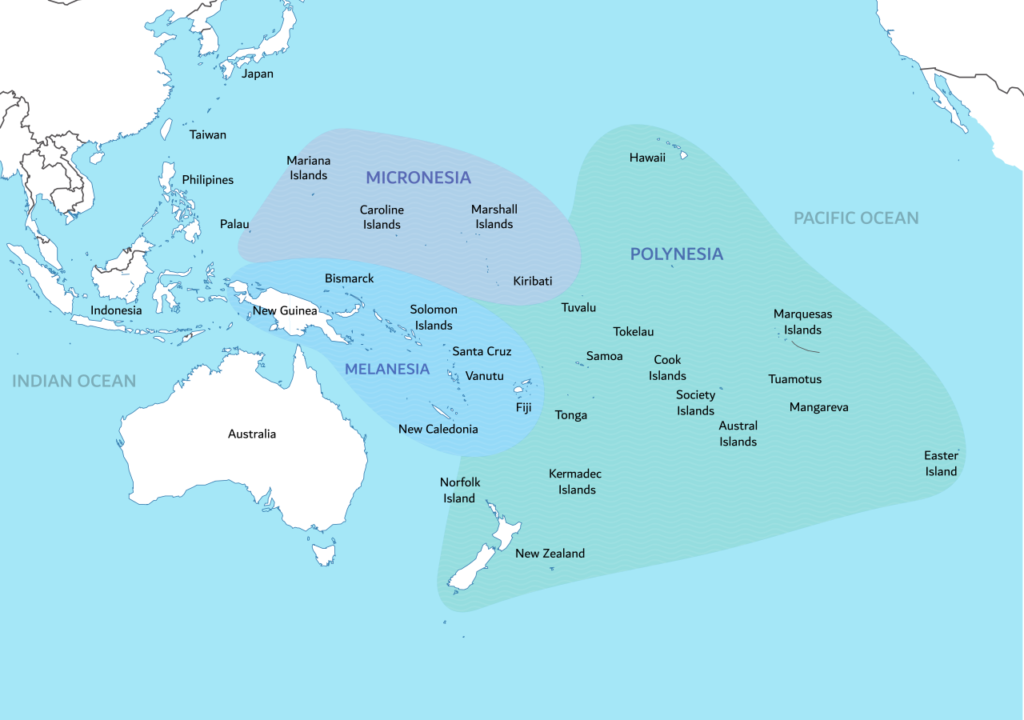
A map of distinct cultural regions of Pacific Ocean islands, including Polynesia
♾️ Classic elements
Ornamental tattoo designs can be very different, but, in principle, the most popular ornaments include mandalas, triangles, intricate swirling lines, and spirals. These shapes are arranged in symmetrical and aesthetically pleasing compositions. You might also encounter organic elements, such as flowers, leaves, vines, or ornamental stars, that add a touch of natural beauty to the ink designs.
If all of these details are characteristic of ornamental tattoos, how is this style different from geometric and tribal tattoos, you might ask. Well, the borderlines between them are, indeed, blurry, but we’ll try our best to explain the nuances in the section about the stylistic variance.
🍃 Meanings
Ornamental tattoo meanings can be very different. Versatility is one of the best aspects of this genre since you have all the creative freedom to deliver the message you want. Very often, a dainty ornamental tattoo can represent vitality, spiritual connections to nature and the universe, cultural belonging, or deeply personal motives. However, there is nothing wrong with wearing such a tattoo just because it looks sophisticated and elegant. In the first place, ornamentalism is a way of creating unique aesthetics, and if you enjoy following the intricate ink patterns in the mirror—the lack of hidden meaning should not discourage you.
As the saying goes, it is better to see something once than to hear about it a thousand times, so let’s dive into our creative collection, where ornament tattoo designs are grouped by style and body placement.
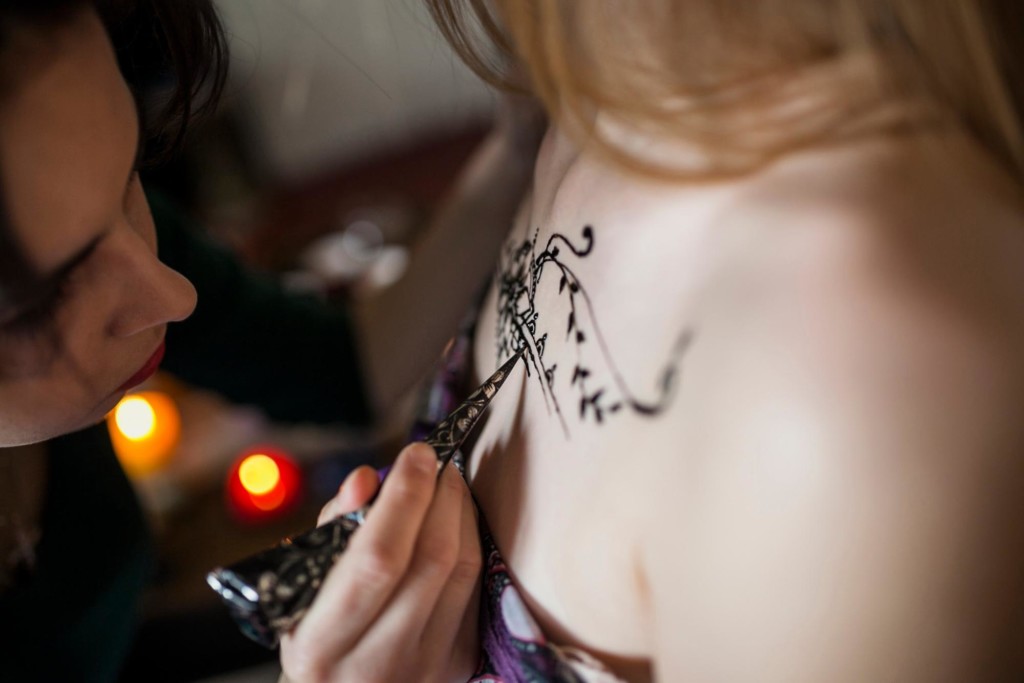
The process of making an ornamental henna tattoo
Stylistic Variety of Ornamental Tattooing
As promised, we’ll briefly explain the differences between ornamentalism, tribal, and geometric tattoo styles. As there are no hardline definitions, we consider tribal tattoos a branch of the ornamental style, since they often use similar elements and patterns. The distinctive feature is that tribal tattoos can be more easily attributed to a specific origin culture, such as Celtic, Polynesian, Aztec, Cherokee, and many others (we have quite a few examples of tribal tattoos below).
At the same time, geometric tattoos are a separate genre that uses precise geometric shapes and lines. Such tattoos look much sharper than ornamental designs and emphasize the strict use of space rather than free-flowing repeating patterns. Also, adding colors to a geometric tattoo is common, unlike ornamentalism.
Decorative
Decorative tattoos feature clean, minimalistic designs that use fine lines and tiny dots to create elegant ink pieces. Unlike tribal tattoos, usually, you don’t see large sections filled with black ink but rather small dispersed elements.
Tribal
Tribal tattoos are a branch of ornamental tattoo style characterized by bold, black lines and intricate patterns inspired by the traditional art of various indigenous cultures around the world. These tattoos often feature symbols and folk motifs that hold spiritual significance within the communities from which they originate.
Pattern Work
As the name suggests, pattern work tattoos are all about complicated and detailed ornaments that feature connected elements such as swirling lines, mandalas, or impossible geometric shapes. Quite often, decorative and pattern work tattoos look very similar, and it is hard to place a design in one specific category. Still, we tried our best to make the differences visible in our collection.
Henna Tattoos
Henna tattoos, also known as Mehndi art, represent a unique technique of temporary designs created using a paste made of the leaves of the henna plant. Their intricate patterns often feature floral motifs, geometric shapes, and ornate detailing. Traditionally, henna tattoos were applied before celebrations, especially—weddings, to emphasize femininity, but it doesn’t mean that men can’t wear them. Mehndi art has gained global popularity for its non-permanent nature and unique appearance.
Where to Place an Ornamental Tattoo Design
The size of the ink piece is entirely up to you, so your options range from a small ornamental star tattoo on the shoulder to an ink piece that covers the entire chest or even a full-body suit. But still, there are a couple of things to consider before you settle in with a tattoo placement.
⌛ Pain level
The level of pain you feel from a shoulder tattoo is not the same as from the one on the ribs, so you need to make sure that you are okay with it. It is especially important if you are an ink art newcomer and don’t know how much pain you can tolerate. Also, because your body gets tired, the pain intensifies several hours into the session, and therefore, large tattoos cause more discomfort. You can see a tattoo pain map below, but if you need more insights into this essential topic, feel free to explore our article about the least painful places to get a tattoo.
![Tattoo pain chart for men and women by Healthline[1]](https://inkmat.ch/wp-content/uploads/sites/7/2023/11/ornamental-tattoo-2-1024x547.png)
Tattoo pain chart for men and women by Healthline[1]
🔬 Amount of detail
Think about how much detail you want in your ornamental tattoo. If your goal is to have many subtle, intricately connected elements, you should probably opt for a more spacious placement. To fit many details in a small skin area, the artist has to use a thinner needle, which complicates the process and requires significantly more precision.
👀 Visibility
Consider the visibility of your future tattoo. Do you want it to be as noticeable as possible, or is it something for you and your partner’s eyes only? Keep in mind that the most visible locations (like the wrists or fingers) are also the ones that don’t hold the ink all too well because of the constant friction when taking clothes and rings on and off.
With these nuances in mind, let’s see how the ornamental tattoos look in different locations.
Arms
This tattoo selection features our artists Gina Ilczyszyn, Clinton Lee, and Daniel Troyer
Legs
This tattoo selection features our artists Gina Ilczyszyn, Clinton Lee, and Daniel Troyer
Back
This tattoo selection features our artists Gina Ilczyszyn and Clinton Lee
Neck
This tattoo selection features our artist Gina Ilczyszyn
Chest
This tattoo selection features our artists Gina Ilczyszyn and Clinton Lee
Multiple Areas
How To Combine Ornaments with Other Tattoo Styles?
Mixing styles is rather common for tattooing simply because it offers an incredible amount of artistic opportunities and a higher chance of finding a one-of-a-kind design. But the ornamental tattoo style has a sort of aloof reputation and rarely welcomes colors or unorthodox elements. However, if you know where to look, you can find great examples of style blending. We selected 6 beautiful tattoos that combine floral themes, realistic details, dotwork technique, and breathtaking colors with ornamental elements, and we are happy to share these artworks with you.
Summary
Elegance and timelessness are the two defining characteristics of ornamental tattoos. For centuries, these intricate designs held deep spiritual and religious meanings. Today, a dainty ornamental tattoo can send a unique message or become an organic detail of your body’s aesthetics.
We collected more than 50 ornamental tattoo designs in one article to show how cool different branches of this style can be, including trendy tribal and henna tattoos. You will find tattoo ideas for almost any body placement and original stylistic combinations.
Thanks for exploring our collection! We hope you found ornamental tattoo designs to inspire your first or next tattoo.
FAQ
❓ What Is an Ornamental Tattoo?
Ornamental tattoo is characterized by intricate decorative patterns, swirling fine lines, mandalas, and other elements and often draw inspiration from the folk and spiritual art of indigenous groups around the world.
🧐 What Is the Difference Between Geometric and Ornamental Tattoos?
The geometric tattoo style uses precise shapes that look sharper than smooth ornamental tattoos. Geometric style is also much younger than ornamentalism and more flexible when it comes to combinations with other tattoo genres.
🌀 What Is the Meaning of the Mandala Ornament Tattoo?
The word “mandala” is derived from ancient Indian languages and roughly translates as “circle.” The central theme of the mandala tattoo is a geometric pattern radiating outward from the center. Such tattoos often represent wholeness, balance, and harmony.
🙏 Are Ornamental Tattoos Religious?
While many ornamental tattoos carried religious meanings initially, today’s emphasis is placed more on the aesthetic appeal of the tattoo.


